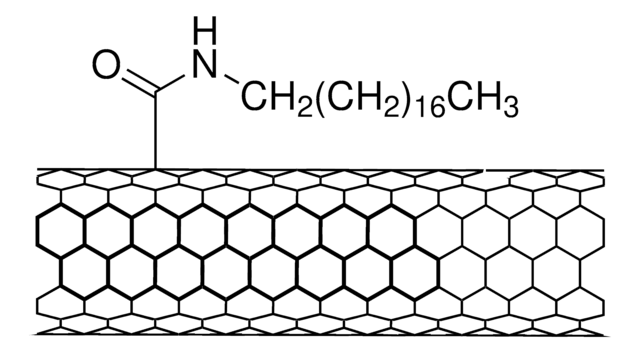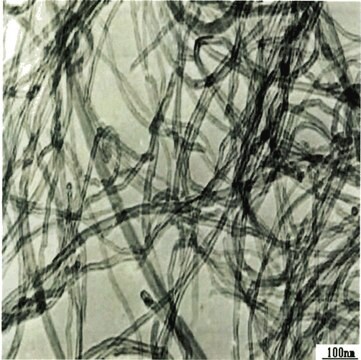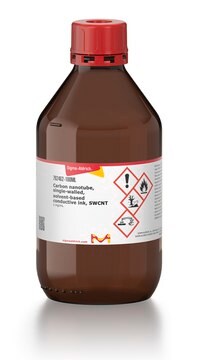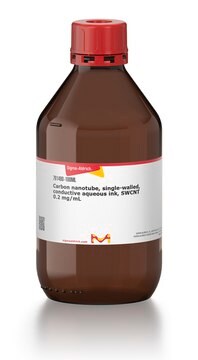652490
Carbon nanotube, single-walled
carboxylic acid functionalized, >90% carbon basis,D × L 4-5 nm × 0.5-1.5 μm , bundle dimensions
Sinônimo(s):
SWNT, carboxylic acid functionalized
About This Item
Produtos recomendados
Nome do produto
Carbon nanotube, single-walled, carboxylic acid functionalized, >90% carbon basis, D × L 4-5 nm × 0.5-1.5 μm , bundle dimensions, avg. no. of layers, 1
Nível de qualidade
Ensaio
>90% carbon basis
Formulário
powder
Características
avg. no. of layers 1
Extensão da rotulagem
1.0-3.0 atom% carboxylic acid
P × C
4-5 nm × 0.5-1.5 μm , bundle dimensions
Impurezas
5-8% metals
solubilidade
H2O: dispersible 0.1 mg/mL
DMF: dispersible 1.0 mg/mL
grupo funcional
carboxylic acid
Categorias relacionadas
Descrição geral
Aplicação
Embalagem
propriedades físicas
Nota de preparo
Nota de análise
Palavra indicadora
Warning
Frases de perigo
Declarações de precaução
Classificações de perigo
Eye Irrit. 2 - STOT SE 3
Órgãos-alvo
Respiratory system
Código de classe de armazenamento
11 - Combustible Solids
Classe de risco de água (WGK)
WGK 3
Ponto de fulgor (°F)
Not applicable
Ponto de fulgor (°C)
Not applicable
Equipamento de proteção individual
dust mask type N95 (US), Eyeshields, Gloves
Escolha uma das versões mais recentes:
Já possui este produto?
Encontre a documentação dos produtos que você adquiriu recentemente na biblioteca de documentos.
Os clientes também visualizaram
Artigos
Carbon nanotubes are materials that possess remarkable properties and offer extraordinary possibilities.
Carbon nanotubes (CNTs) have received much attention since their discovery in 1991 by Sumio lijima1 due to their excellent mechanical, electrical, and optical properties.
A nanocomposite is typically defined as a mixture between a host material (e.g., polymer matrix) and nanofillers with at least one dimension of less than 100 nm.
Single-walled carbon nanotubes (SWCNTs) are promising materials for use in the active channel of field-effect transistors (FETs), photoabsorbing layers of solar cells and photodetectors because of their ultrafast charge transport mobility.
Global Trade Item Number
| SKU | GTIN |
|---|---|
| 652490-1G | 4061835515547 |
| 652490-250MG | 4061835512058 |
Nossa equipe de cientistas tem experiência em todas as áreas de pesquisa, incluindo Life Sciences, ciência de materiais, síntese química, cromatografia, química analítica e muitas outras.
Entre em contato com a assistência técnica









